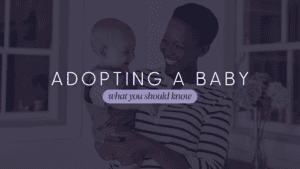
Bonding With Your Baby
When connecting with your newborn isn’t your natural response

Any number of unforeseen circumstances may create a situation in which parent-child attachment is a challenge. In this article, parents can learn principles and strategies for encouraging attachment in a struggling child.
Parents often see attachment as their responsibility to develop in their child. However, it’s important to understand that it’s your responsibility to provide a safe nurturing environment for your child. But you can’t control his decision to attach to you. Attachment is different than bonding. Bonding is what you do toward your child and it happens automatically. On the contrary, attachment is what your child will conditionally do toward you if he assesses his environment to be safe and if you are consistent enough to be relied upon. Attachment is not an automatic response. Just because you bond with your child doesn’t guarantee he will attach to you. Parenting a child with attachment issues doesn’t require perfection but it does require understanding, persistence and patience.
The following risk factors may influence a child’s ability to attach properly:
While these risk factors may be more common in adoptive children or children in the Foster Care system, some of them can occur even in healthy intact families.
Does your child avoid eye contact or refuse to be touched? Is she immature in her language and social skills? Does she comply with your wishes only when she wants something? These are just some behaviors typical of a disconnected child.
If you suspect that you may have a child with attachment issues, seek help from a qualified mental health professional. We prefer one trained in Trust Based Relational Intervention (TBRI). Studies show that without effective treatment, children with attachment disorder or complex trauma become more symptomatic over time. And those symptoms tend to affect the whole family. Therefore, family therapy is usually more effective than individual treatment. Choose a therapist who specializes in attachment issues and makes a point of working with parent and child together.
We counsel parents to use a therapeutic parenting style instead of a traditional parenting style. Our recommendation is based on a couple of factors: First, a child with attachment issues has difficulty responding positively to traditional parenting methods. This is especially important to remember when your daughter behaves violently and irrationally or withdraws sullenly into a corner. The more you try to force her to change her behavior, the more frustrated you will become. That’s because her acting out is due to her brain being in a “reactive” mode. She is likely feeling afraid, angry or hurt.
This is what Daniel Siegel, M.D. calls the “downstairs brain” versus the “upstairs brain”.Therapeutic parenting is geared toward identifying “reactive” patterns inside your child’s brain and how they influence behavior. Therefore, once you gain a good understanding of her brain functioning, you can address problematic issues at that level before dealing directly with her actions. Your aim is to help her transition to a “responsive” mode. She can make a conscious choice to engage in acceptable behavior.
Trust Based Relational Intervention (TBRI) was pioneered by the late Dr. Karyn Purvis. The therapeutic parenting process is a specific way to parent a child with attachment issues. It’s where you use your child’s behavior to clue you in about what’s going on in his brain. You address his brain’s needs in order to help him feel safe. Therefore, he doesn’t have to react in negative ways. In short, you’re parenting his reactive brain rather than simply confronting his behavior. Because of this, therapeutic parenting techniques take extra time, intentionality, persistence and patience. Dealing with your child’s tantrum may take 20 minutes or up to five hours. Depending on your child’s history, using therapeutic parenting to help a child with attachment issues will take between six months to two years of continual repetitive intervention.
When a child with attachment issues is misbehaving, a fundamental intervention process TBRI teaches is called Connect, Empower and Correct.
As a parent, grab a few minutes each day to catch your breath and take a time-out. Tend to your needs as well. These suggestions can make a huge difference in your ability to cope with the stress of therapeutic parenting.
It’s never too late to become connected in a healthy way! When parenting a child with attachment issues, the bad news and the good news are the same: The human brain can always reorganize itself—whether to deal with danger and trauma or to adapt to a new environment of safety and trust. Compromised attachment can heal. It just takes determination and hard work, persistence and patience.
Also, remember that the expectations you have at the outset are going to be very different from the ones which will be possible later. You will be working along a continuum of healing that requires an average of one month for each year of your child’s age. When this process is completed, you will be in a better position to return to traditional parenting tactics.
If you’re doing everything you can to help a child with attachment issues and you aren’t making progress, reach out for help. Look specifically for a licensed Christian counselor who has special training in Child Led Play Therapy, TheraPlay, TBRI, or trauma informed experiential therapy. With proper training and support, you can create a safe nurturing environment where your child can learn to attach.
Ask for help finding a trained Christian counselor who specializes in family attachment therapy. Your family pediatrician may be able to recommend a good fit. If not, Focus on the Family’s Counseling department can provide referrals to qualified professionals in your area. Call us for a free phone consultation.
For more information about the therapeutic parenting model developed by the late Dr. Karyn Purvis called TBRI (Trust Based Relational Intervention), visit the webpage of TCU’s Karyn Purvis Institute of Child Development for a free one-hour “Introduction to TBRI” online video designed to help parents understand their child’s brain development. You can find other resources through their online store.
Resources
The Connected Child: Bring Hope and Healing to Your Adoptive Family
https://child.tcu.edu/wp-content/uploads/2015/06/The-Connected-Child-Chapter-Four.pdf
Empowered to Connect: Created to Connect Study Guide
Therapeutic Parenting Flow Chart
Referrals
Copyright © 2019 by Focus on the Family





Tim Sanford is a licensed professional counselor and the Clinical Director of Counseling Services for Focus on the Family’s counseling department. He is also a pastor, a public speaker and the author of several books, the most recent being Forgive for Real: Six Steps to Forgiving. Tim and his wife Becky have two grown daughters and reside in Colorado.

When connecting with your newborn isn’t your natural response

Would you feel guilty if your spouse bonded more easily with your newborn than you did?

The process of how to adopt a baby can be overwhelming. There are decisions to make prayerfully, organizations to vet, and many perspectives to consider. It’s approaching a new chapter